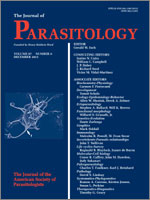The proteocephalidean tapeworm, Corallobothrium solidum, type species of the genus, is redescribed on the basis of the examination of its type specimens and extensive material recently collected from Malapterurus electricus (type host). Some morphological characteristics of taxonomic importance are reported for the first time, such as the presence of semispherical (U-shaped) sphincters on the external (outer) margin of the suckers, a vaginal sphincter, a well-developed seminal receptacle, and a unique morphology of the eggs. Corallobothrium solidum differs from the 2 remaining species of the genus, both parasitic in channel catfishes (Ictaluridae), in its scolex shape, morphology of its suckers, presence of longitudinal and transverse grooves on the body surface, dense network of excretory canals in the apical part of the scolex, morphology of the eggs, and uterine development. The non-monophyletic nature of Corallobothrium is further supported by molecular data (partial sequences of the 28S rRNA gene) because C. solidum and the 2 remaining species from ictalurids do not form a monophyletic assemblage. Therefore, Essexiella n. gen. is proposed to accommodate Essexiella fimbriatum new comb. (type and only species; syn. Corallobothrium fimbriatum) from channel catfish. Essexiella n. gen. differs from Corallobothrium, Megathylacoides, and Megathylacus by the absence of a sphincter in the suckers, from Corallotaenia by the shape of the scolex and the number and shape of proglottids, and from Paraproteocephalus by the structure of the uterus. The diagnosis of Corallobothrium, which becomes monotypic and restricted to electric catfishes in Africa, is emended. The remaining species of Corallobothrium, Corallobothrium parafimbriatum, is tentatively transferred to Corallotaenia as Corallotaenia parafimbriata n. comb., based on molecular data, small size of the strobila, and shape of the scolex.
How to translate text using browser tools
1 December 2011
Redescription of Corallobothrium solidum (Cestoda: Proteocephalidea) and Erection of A New Genus, Essexiella, For Tapeworms from Channel Catfishes (Ictaluridae)
Tomáš Scholz,
Alain de Chambrier,
Jean Mariaux,
Roman Kuchta
ACCESS THE FULL ARTICLE

Journal of Parasitology
Vol. 97 • No. 6
December 2011
Vol. 97 • No. 6
December 2011




